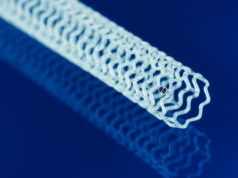A real-world analysis of peripheral arterial disease (PAD) patients in Canada indicated open revascularization may not offer a long-term benefit over endovascular intervention. In a population-based retrospective cohort study, researchers from the University of Toronto in Toronto, Ontario, found that in PAD patients eligible for both strategies, endovascular revascularization is associated with “superior or not significantly different outcomes” relative to open repair.
The findings are part of research presented at the Canadian Society for Vascular Surgery (CSVS) annual meeting in Vancouver, British Columbia (Sept. 9–10) by Jean Jacob-Brassard, MD, and colleagues from the Department of Surgery at the University of Toronto.
The investigators looked at all Ontarians 40 years or older revascularized between April 1, 2005, and March 31, 2020, through either an endovascular or open approach, with a primary outcome of amputation-free survival and secondary outcomes of major amputation, death, major adverse limb events (MALE), and major adverse cardiovascular events (MACE).
They used Cox proportional hazards models to compare patients undergoing endovascular vs. open revascularization, with weighting by propensity score-based overlap weights to account for baseline characteristics. Analyses were repeated for pre-specified subgroups: diabetes, isolated infrainguinal disease, and tissue loss.
Among the 28,864 patients identified as having been revascularized for PAD, 39% (n=11,203) underwent endovascular revascularization. Median follow-up time was 4.42 years.
In the full cohort weighted analyses, endovascular revascularization was associated with better amputation-free survival, no difference in major amputation, lower mortality, and lower hazard of MALE after four years, the researchers found. There were no differences in MACE.
“Among subgroups, there were no differences in [amputation-free survival], major amputation or death,” Jacob-Brassard et al report. “Endovascular revascularization resulted in lower long-term MALE for those with infrainguinal disease only and those with tissue loss. There was no difference in MACE.”












